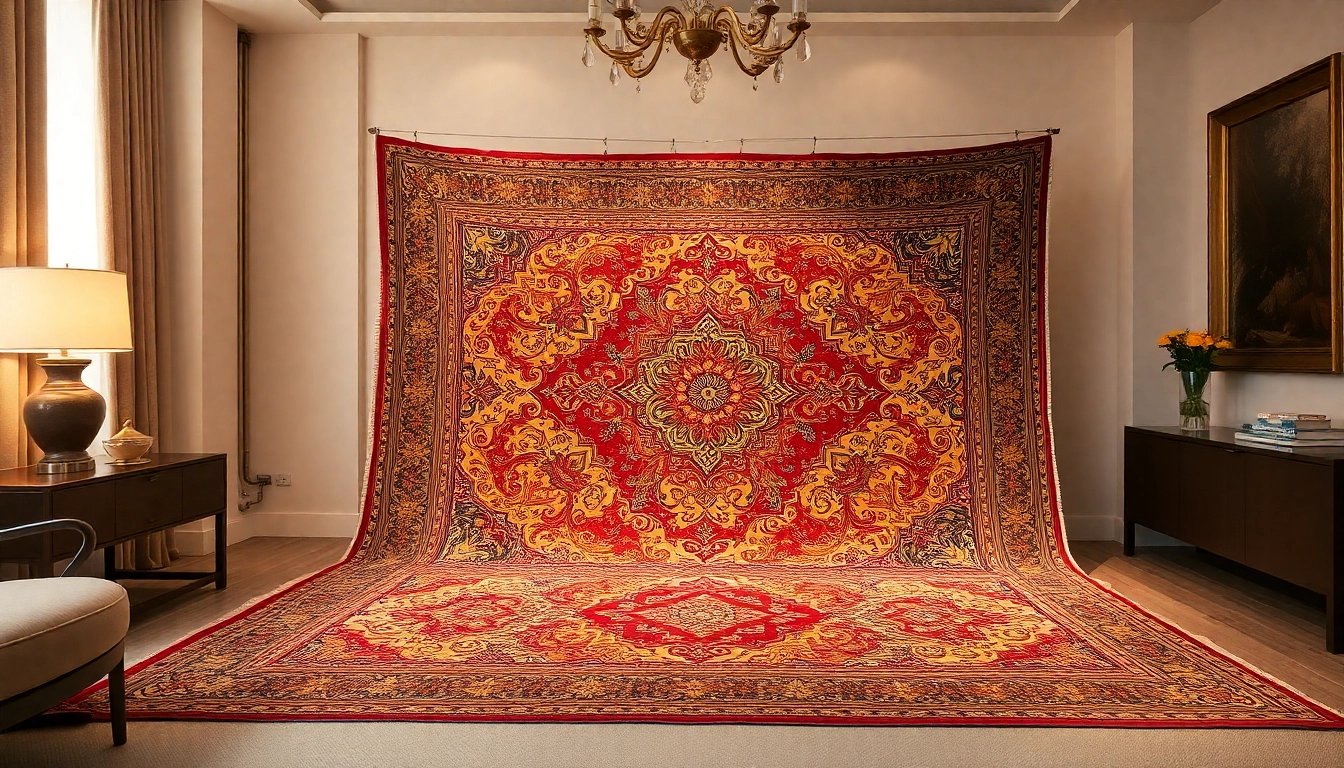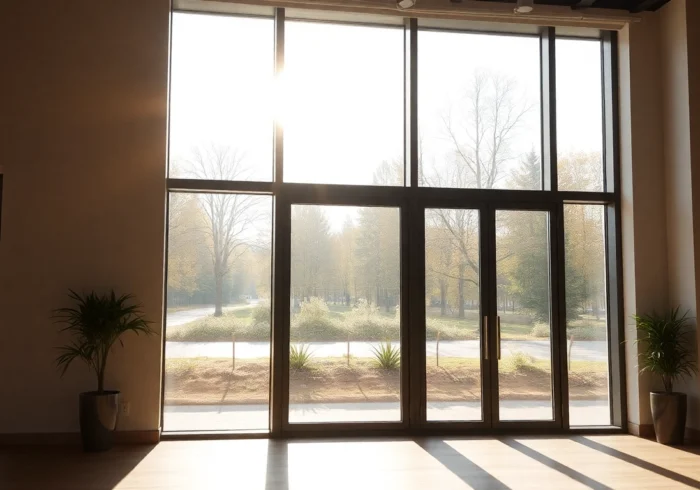Understanding the Heritage and Quality of Tappeto Persiano Milano
The allure of Persian carpets has captivated collectors, interior designers, and homeowners for centuries, and in Milan—a city renowned for its fashion, design, and art—the fascination with authentic Tappeto persiano Milano continues to thrive. Each piece embodies centuries of craftsmanship, cultural symbolism, and regional uniqueness, making them not merely decorative items but treasured works of art and heritage. This deep-rooted tradition began in Iran, where master artisans have perfected the art of knotting and dyeing, transforming natural materials into intricate, durable, and vibrant carpets. Today, Milan residents can access a rich blend of tradition and contemporary style, integrating these timeless pieces into modern living spaces.
Historical craftsmanship and cultural significance in Milan
Despite its farthest origins in Persia, the history of Persian carpets has deeply interconnected with global trade routes, especially through the Silk Road, bringing their art to European capitals like Milan. Italian aristocrats and merchants historically admired the craftsmanship, often commissioning bespoke pieces to display sophistication and a connection to Middle Eastern luxury. In modern Milan, this heritage persists, with ateliers and showrooms working tirelessly to preserve traditional weaving methods while integrating them into the city’s vibrant design scene. Many Milanese collectors view these carpets as more than aesthetic elements—they symbolize a connection to history, culture, and artisanal mastery.
Key features that distinguish authentic Persian carpets
Authentic Persian carpets are characterized by their intricate designs, high-quality materials, and precise craftsmanship. Key features include:
- Design motifs: Traditional patterns such as floral medallions, geometric patterns, or paisleys, each specific to regions like Tabriz, Isfahan, or Qom.
- Material quality: Pure wool, silk, or a combination, sourced from high-quality natural fibers that provide durability and luster.
- Weaving techniques: Hand-knotted with symmetrical backlinks, ensuring each knot is placed meticulously, which significantly influences the value and authenticity.
- Colors: Rich, natural dyes derived from plants, minerals, and insects, creating vibrant yet balanced palettes that age gracefully.
Materials and weaving techniques unique to Iranian artisans
Iranian artisans employ age-old weaving methods, often passed down through generations. The most prized carpets are hand-knotted using the symmetrical or “Turkish” knot, which offers durability and dense detailing. Materials like silk allow for high-fineness and shine, especially in luxury pieces from Ghom or Qum. Wool is typically sourced from local sheep breeds, prized for its resilience and softness. The dyeing process uses natural ingredients such as indigo, madder root, or pomegranate rind, which produce a palette of warm and cool tones. Collectively, these techniques ensure each Persian rug is a unique artifact, combining artistic expression with exceptional craftsmanship.
Choosing the Perfect Tappeto Persiano for Your Milano Home
Size, color, and design considerations for modern spaces
Selecting the right Persian rug requires careful evaluation of your living or commercial space. For contemporary Milan apartments, consider:
- Size: Larger sizes (e.g., 200×300 cm) work well under dining tables or in living rooms, while smaller passages or bedrooms might benefit from 150×200 cm or runners.
- Color palette: Neutral tones like beige, ivory, or soft greys can complement minimalist interiors, whereas bold reds, blues, or multifaceted designs add vibrancy to eclectic or traditional settings.
- Design: Abstract, geometric, or floral patterns need to align with your interior style, balancing modern furniture with timeless craftsmanship.
How to evaluate quality and authenticity in local shops
When browsing in Milan’s specialized showrooms or boutiques, assess the authenticity by:
- Requesting provenance documentation—knowing the origin and certification adds confidence about authenticity.
- Examining the knot density—higher knots per square inch (e.g., 200+ knots) indicate finer craftsmanship.
- Assessing material quality—genuine wool should feel soft yet resilient; silk should have a lustrous sheen.
- Looking for irregularities—minor imperfections are a sign of handcrafted authenticity, unlike machine-made imitations.
Importantly, consulting with seasoned experts or reputable vendors ensures your investment aligns with genuine Persian artistry.
Tips for combining Persian rugs with contemporary interior styles
Integrating a Persian rug into modern decor requires a thoughtful approach:
- Contrast: Use bold or richly patterned rugs to create focal points against minimalist furniture and neutral walls.
- Balance: Pair traditional rugs with sleek, modern furniture to achieve a harmonious blend of old and new.
- Layering: Combine different textures or add complementary textiles like cushions and throws to enhance visual interest.
This approach elevates the aesthetic appeal and ensures the rug complements rather than overwhelms your interior.
Where to Buy Genuine Tappeto Persiano Milano
Leading showrooms and trusted vendors in Milan
Milan offers several reputable places where enthusiasts and collectors can acquire authentic Persian carpets. Notable among these is Toranj, known for high-quality, hand-woven pieces sourced directly from Iran, and Artorient Milano, which boasts a comprehensive collection including traditional, modern, and vintage Persian rugs. These showrooms emphasize authenticity, craftsmanship, and customer education, providing a safe avenue for investment.
What to expect from high-quality importers and artisans
When engaging with trusted vendors, expect to receive detailed provenance, certification of authenticity, and guidelines for care. Many importers collaborate directly with Iranian artisans, ensuring fair trade practices and preservation of traditional techniques. A reputable shop will also provide guidance on choosing the right rug based on your space and preferences, along with maintenance advice to preserve the item’s value.
Factors influencing pricing and value for money
Pricing for Persian carpets in Milan varies based on:
- Material: Silk rugs command higher prices due to their fineness and sheen.
- Size: Larger, intricate, and older vintage pieces tend to be more expensive.
- Provenance: Rugs from renowned regions like Tabriz or Isfahan carry premium value.
- Craftsmanship: Knot density and artisanship directly influence quality and cost.
Balancing these factors, buyers should consider not just initial purchase price but also long-term investment and preservation.
Care, Maintenance, and Restoration of Persian Rugs in Milan
Best practices for cleaning and preserving your Tappeto persiano
Maintaining the beauty and longevity of a Persian rug involves regular gentle cleaning:
- Vacuum gently with a soft brush attachment to remove surface dust.
- Rotate the rug periodically to distribute wear evenly.
- Use natural fiber cleaning solutions or consult professionals for deep cleaning.
- Minimize exposure to direct sunlight to prevent fading.
Avoid harsh chemicals or over-wetting, which can damage natural fibers and dyes.
Professional restoration services available in Milan
For damage such as tears, stains, or fading, Milan hosts expert restoration services like those offered by Irana Tappeti Persiani ed Orientali. Proven specialists can repair knots, re-dye faded areas, and restore structural integrity without compromising authenticity. Restoration extends your carpet’s life, preserves historical value, and maintains its aesthetic appeal.
Long-term tips to keep your Persian rug looking new
Long-term preservation practices include:
- Using rug pads to prevent slipping and reduce wear on the foundation.
- Controlling indoor humidity and temperature to inhibit mold and fiber deterioration.
- Inspecting regularly for signs of pests or damage and acting promptly.
- Storing the rug properly if not in use, preferably rolled and wrapped in breathable fabric.
These steps ensure ongoing beauty and value over decades.
Investment and Trends in Tappeto Persiano Milano
Current market value and investment potential
Persian rugs continue to be a lucrative investment, with vintage and antique pieces appreciating in value. Market demand remains robust, especially for well-known regional carpets with verified provenance. Factors like knot density, rarity, and condition influence valuation. Milan, with its dynamic art and luxury market, provides an excellent platform for collectors seeking both aesthetic pleasure and financial growth.
Emerging design trends combining tradition and modernity
Contemporary Milanese interiors are embracing Persian rugs that blend traditional motifs with modern design sensibilities. Trends include minimalist backgrounds with vibrant vintage rugs, geometric reinterpretations, and custom-made pieces that incorporate contemporary color palettes. This fusion broadens appeal and keeps Persian craftsmanship relevant in 21st-century interior design.
How to assess a Persian rug’s worth and provenance
Accurate valuation involves examining documentation, regional origin, age, and craftsmanship quality. Reputable appraisers utilize detailed provenance records and compare market benchmarks. Authenticity certificates and expert opinions can substantiate claims and inform investment decisions, ensuring your acquisition retains or increases its value over time.


